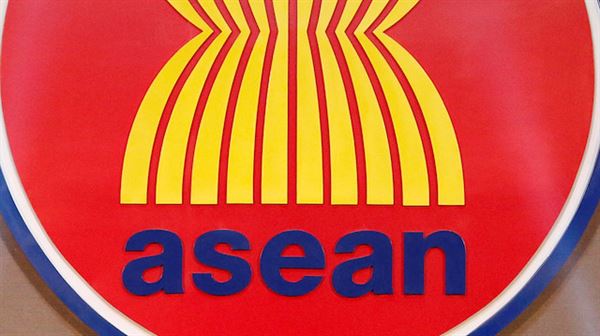Malaysia's foreign minister said on Sunday that his country must boost its naval capabilities to face the worst case scenario of the South China Sea c
Malaysia’s foreign minister said on Sunday that his country must boost its naval capabilities to face the worst case scenario of the South China Sea conflict.
Saifuddin Abdullah said Malaysia could file a protest if China violated its territory, but that its lack of naval and maritime enforcement assets left it at a disadvantage.
Tensions between the U.S. and China have escalated in recent weeks, especially after a U.S. Navy destroyer ship sailed near islands claimed by China last month.
China described U.S.’s actions as a “challenge”, claims which Washington brushed off as excessive .
Moreover, he added, the Malaysian Navy would struggle to match up to the Chinese Coast Guard who had been present for 24 hours around the South Luconia Shoals off the east Malaysian state of Sarawak.
“Our naval ships are smaller than the Coast Guard vessels from China,” Saifuddin told the parliament.
However, Malaysia would continue to push its position on the non-militarization of the South China Sea and call for a new approach with ASEAN.
“The South China Sea should not become a point of conflict among countries. We are consistent on this in international forums such as ASEAN, where we raise the concept of self-restraint and non-militarization in the South China Sea,” said Saifuddin.
– Rising awareness on security politics
Defense and military analyst Connie Rahakundini Bakrie said Saifuddin’s remarks indicated ASEAN’s increased awareness of its security politics.
“Those statements were issued by the foreign minister, not the defense minister. It means that there is an understanding that ASEAN [security] must be put forward,” she told Anadolu Agency on Saturday.
She also said although ASEAN did not have a defense pact, security cooperation must be carried out within regional waters.
“Malaysia has admitted that its naval capability was not up to par with the Chinese Coast Guard,” said Connie, adding that if a clash broke out between the U.S. and China, ASEAN’s aspirations to free the South China Sea from a military presence would be difficult.
It would be odd if ASEAN countries did not have a military presence in the disputed waters, while foreign countries such as China and the U.S. did, Connie said.
During the 2014 inauguration, President Joko Widodo announced a long-awaited maritime-axis doctrine — a strategy doctrine prioritizing maritime elements in the country’s military, economic and foreign policy. However, neither the foreign nor defense ministry was able to convert this vision into actual policies.
In fact, she said, the vision of maritime-axis is a momentum for Indonesia to strengthen its defense capabilities, especially related to South China Sea dispute.
“Our country cannot remain silent,” Connie said, stressing that Indonesia should be more concerned about security politics.
She said the maritime-axis doctrine actually aims to strengthen both naval and air forces, as there could be “no great naval force without depending on the air force.”
She also urged the government to boost the capabilities of its weapons and defense as well as combat infrastructure in supporting security politics.
– Must follow ASEAN rules
Shofwan Al Banna, an international relations expert, described Malaysia’s determination to boost its naval forces in accordance with the South China Sea dispute.
“ASEAN countries need to ensure that they would not be seen as weak by other countries. Nothing guarantees a country’s survival except its own strength,” he told Anadolu Agency.
He underlined that the U.S. — a power able to counterbalance China in the disputed waters — still remained trapped in Middle East conflicts.
“[PKK/PYD/YPG] case [in northern Syria] showed that U.S. is not always reliable in defending its allies,” he added.
Noting that Malaysia claimed sovereignty over the southern parts of the sea, Shofwan said that if China became an unstoppable force in the region, Malaysia would certainly be affected.
“Even if Chinese vessels sailed near Malaysian waters, Malaysia can’t do much,” he explained.
He did not dismiss the possibility that the U.S. and China could engage in an open war in the South China Sea if the communications between the two countries fell apart.
He said that though Indonesia was not a claimant state in the South China Sea, it should be more assertive and take initiative to ensure ASEAN remained relevant in international relations so both the U.S. and China would abide by ASEAN’s rules.
Although ASEAN had not come to a formal decision regarding the South China Sea, at least all member countries were still committed to avoiding violence in determining their claims, he added.
Iwan Santosa, an Indonesian journalist, said some ASEAN countries such as Malaysia and Vietnam were expanding their sovereignty over the disputed waters.
“As Malaysia is currently facing internal conflict, including racism issues, as well as a dispute with the opposition, the country should first unite its citizens,” he said.
Iwan argued that Malaysia’s efforts to boost its naval forces was not a new phenomenon, with the country purchasing submarines from France in 2012.
In addition, Indonesian Ambassador to Vietnam Ibnu Hadi said the South China Sea dispute had become a priority in Vietnam’s foreign policy.
“Every effort they have made in improving their weapons systems intended to deal with the dispute,” he claimed.
The ambassador said the escalating tension in the South China Sea had affected the Vietnamese government as it became the most frequently-cited issue in the state speeches.
The Association of Southeast Asian Nations is a regional intergovernmental organization comprising ten countries in Southeast Asia: Brunei Darussalam, Cambodia, Indonesia, Laos, Malaysia, Myanmar, Philippines, Singapore, Thailand, and Vietnam.
